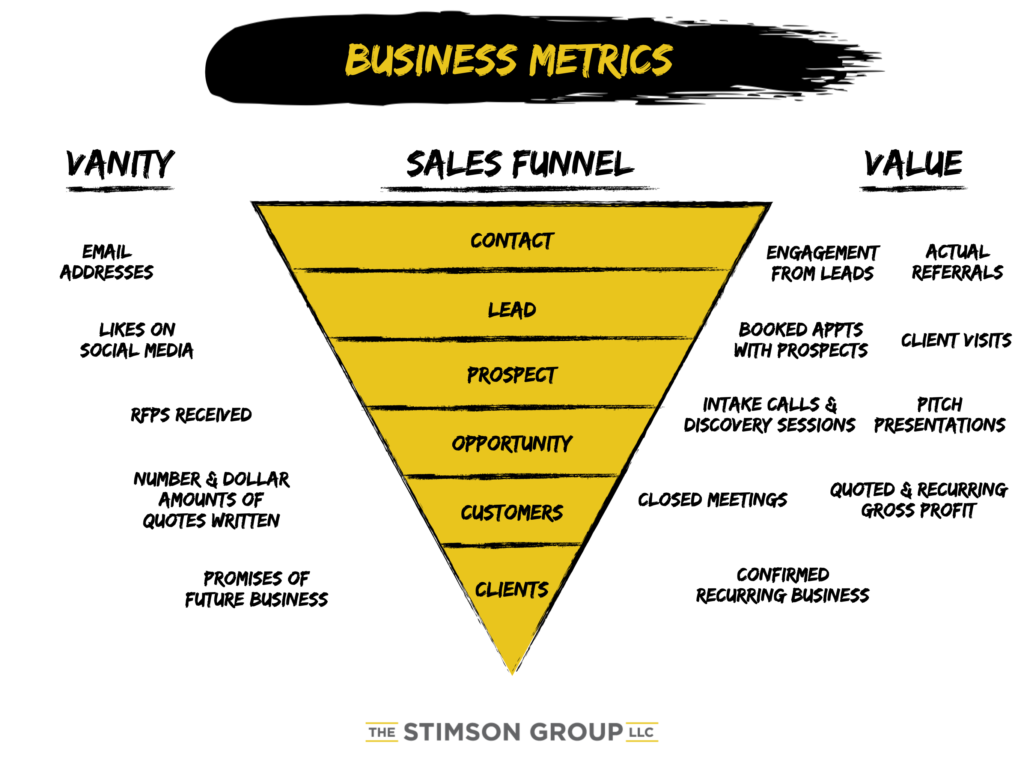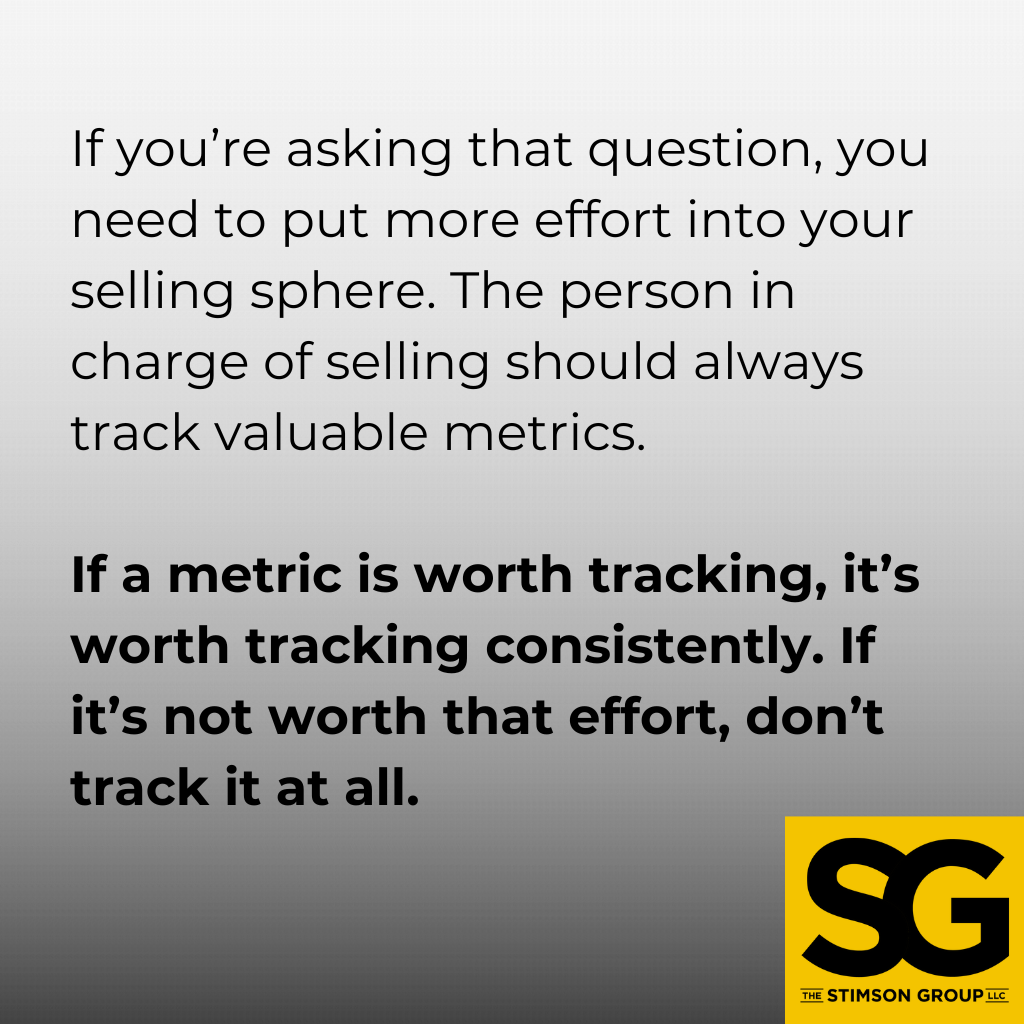
Listen instead on your Monday Morning Drive:
We all love tracking numbers. As owners, we’re drawn to data like moths to a flame. But are you tracking metrics because they’re fun to track or because they provide real value?
I’ve watched too many businesses fall into the trap of tracking vanity metrics — numbers that seem interesting but don’t motivate meaningful change.
The Pitfall of Vanity Metrics
I’ve met countless bookkeepers and owners who focus on equipment discounts and quoting. They track the average discount given over time, thinking it’s a useful metric.
But when I ask what happens when this number changes, their responses are telling: “We’re happier.” Or, “We’re less happy.”
So, I dig deeper. “Do you change anything based on this metric?”
“No, because discounts are a necessary part of doing business. We like it when we discount less, but we’re not doing anything specific to make that happen.”
There’s the crux of the issue: If tracking a metric doesn’t spur you to change your behavior, you’re wasting your time. It’s not just a distraction; it’s misleading and costly in that it leads to misguided strategies.
Defining Valuable Metrics
So, what metrics actually matter?
To secure a steady stream of future work, we need to look at our sales funnel. Revenue is a great indicator of future work, but it’s too far down the line. Analyzing revenue alone is like judging someone’s health status by checking whether they’re dead or alive. It doesn’t tell us what to improve.
Imagine you’re stuck on a desert island and want to know how your team is performing. You’d look at your sales funnel and break it into two halves: vanity metrics and valuable metrics. Valuable metrics lead to engagement; vanity metrics don’t.
For example, let’s start at the top of the sales funnel. The number of email addresses on your mailing list sounds impressive, but how many of those emails are opened? That’s the metric that matters. If you’re not actively using those emails to secure business, the list size is just a vanity metric.
The same goes for social media. The number of likes on your Facebook post may make you feel good, but the real value lies in engagement — people taking a tangible step, like responding to a call to action.

Vanity vs. Value: Real-World Examples
Let’s look at some common vanity metrics:
- Number of email addresses
- Likes on social media (Facebook, Instagram, etc.)
- Number of RFPs received
- Number and dollar amount of quotes written
- Promises of future engagement (“See you next year!”)
Now, contrast those with valuable metrics:
- Engagement from leads (email opens, downloads, questions, etc.)
- Actual referrals (introductions, not just email addresses)
- Booked appointments with prospects
- Intake calls and discovery sessions
- Client visits (to your office or theirs)
- Pitch presentations
- Meetings that lead to actual customers
- Quoted and recurring gross profit
- Confirmed recurring business
The difference is clear. Vanity metrics might stroke your ego, but valuable metrics drive your business forward.
Putting Metrics into Practice
“Tom, who should compile these valuable metrics, and how often?”
If you’re asking that question, you need to put more effort into your selling sphere. The person in charge of selling should always track valuable metrics.
If a metric is worth tracking, it’s worth tracking consistently. If it’s not worth that effort, don’t track it at all.
I once sat in on a sales meeting with a team that lamented the effort they put into a job they didn’t win. I asked about their discovery process for that event.
“Well, they just sent us an RFP, and we talked about it,” they said.
“So, you didn’t use your standard discovery process?” I asked.
“No. It wasn’t needed.” Strike one.
“Did they visit your office?”
“We didn’t think that was necessary.” Strike two.
“Did they get a capabilities presentation?”
“No. We didn’t do that.”
And there was strike three. “Then why are you surprised you lost the job?” I asked. “You checked all the vanity boxes, but your valuable efforts were nonexistent.”
The lesson? Vanity metrics might make you feel good, but they won’t win you business. Focus on the metrics that spur action, indicate engagement, and drive real results. Track them consistently, act on them strategically, and watch your business thrive.






Leave a Reply